SHOOT YOUR SHOT LIKE SADIE VIMMERSTEDT
An Inspirational Woman and a Couple of Menschy Men Made a Hit Song
“If you follow your passion, you'll never work a day in your life.” - Tony Bennett
Hiya Friends,
I’m sure you heard the sad news that the legendary singer, Tony Bennett passed away on Friday at age 96. I read and heard many wonderful tributes to Bennett over the weekend and the takeaway for me was this: Tony Bennett was one hell of a mensch. Everyone adored the guy and had a tough time finding anything unkind to say about him. That’s quite a feat when you’ve hung around this floating orb for nearly 100 years.
“Bennett is outrageous,” Simon Hattenstone, a reporter for The Guardian, wrote in 2002. “He mythologizes himself, name-drops every time he opens his mouth, directs you to his altruism, is self-congratulatory to the point of indecency. He should be intolerable, but he’s one of the sweetest, most humble men I’ve ever met.” — New York Times obit.
It’s easy to understand what Hattenstone meant if you listen to excerpts from Terry Gross’s three interviews with Tony Bennet from 1982, 1991, and 1998. In the 1998 recording, Bennett—a wonderful raconteur, both in song and conversation—told a remarkable story about a woman named Sadie Vimmerstedt.
A REVENGE SONG FOR THE AGES
In 1957, Sadie Vimmerstedt—a 52-year-old cosmetologist and widow struggling to get by in Youngstown, Ohio—had an idea for a revenge song inspired by celebrity gossip. The subject of her ire was none other than Ol’ Blue Eyes himself, Frank Sinatra. It began in 1950, when Sadie read the scandalous news that Sinatra had ditched his teenage sweetheart and adoring wife of 20+ years, Nancy, for the starlet, Ava Gardner. Disappointed and disgusted, Sadie likely held off on listening to her Sinatra records for a while. We’ve all be there. Right? There’s nothing worse than discovering our idols are flawed and contemptuous bums.
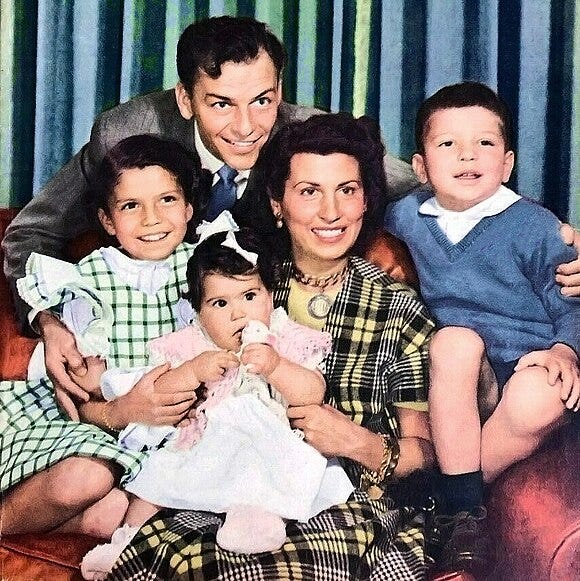
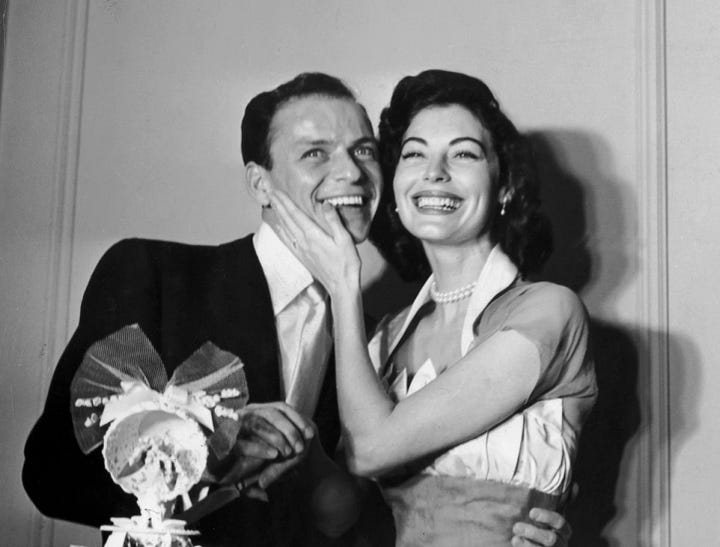
Cut to seven years later; Ava Gardner walks out on Frank and, allegedly, shatters his heart to dust. That’s when the proverbial lightening struck for Sadie. Delighting in Sinatra’s pain, she came up with a line for a song that she thought had Billboard chart potential: “I want to be around to pick up the pieces when somebody breaks your heart.” Only one obstacle stood in her way to radio play; Sadie had no idea how to write a song.
I suspect most of us, faced with a similar hurdle, would file our genius song lyric under: Where All My Million Dollar Ideas Go To Die. I have one of these files containing winning inventions that might have made me rich if I’d kept at it like Magnetic Fridge Frames™—little sleeves to protect photos on the fridge door from sticky grime. Perhaps a product like this exists now, but back in the early aughts, I traveled to NY Gift Fair and there was bupkis available. I even made a little prototype, but then I got busy with my day job, stuck my Fridge Frames™ in a box, and moved on.
JOHNNY MERCER WAS ALSO A NOTORIOUS MENSCH
Sadie, however, refused to let her lack of songwriting skills stand in the way of sticking it to Sinatra. And this is the part of the story I absolutely love. She grabbed some slips of paper from an old desk calendar and penned a short missive to the hit-making songwriter, Johnny Mercer. According to Tony Bennett, the note said, “Johnny, this sounds like something you would write.”
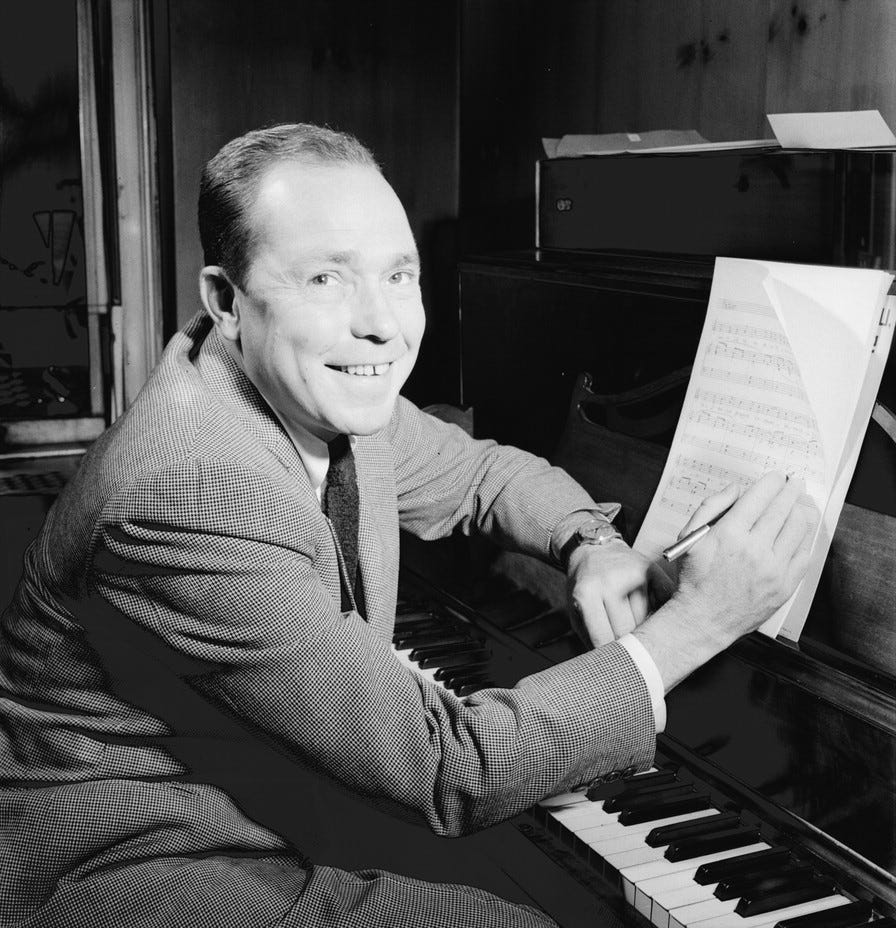
At that time, Mercer had achieved tremendous fame and success as a songwriter and businessman. He’d founded Capitol Records, won two Oscars, worked non-stop as one of Hollywood’s premiere lyricists, wrote hits like “Too Marvelous for Words,” “Hooray for Hollywood,” “Day In, Day Out,” and “That Old Black Magic,” to name a few.
As you may have guessed, a star like Mercer wasn’t listed in the phone book, so Sadie did the equivalent of sending a letter to Santa or tossing a message in a bottle out to sea. She simply addressed the envelope to: Johnny Mercer, Songwriter, New York, NY and dropped it in a post box. ⬇️
NO ADDRESS? NO PROBLEM
Believe it or not, the good people at the USPS didn’t pitch this letter in the garbage bin as Dejoy-less might urge them to do today. No, they forwarded it to ASCAP (the American Society of Composers, Authors and Publishers) where another menschy person sent the letter to Mercer. “Johnny got such a kick out of it. He wrote the song,” so says Tony Bennett.
In actuality, Sadie didn’t hear from Mercer for a couple of years. The facts from here are a bit fuzzy. One source claims that Mercer, after finally composing the song, wrote to Sadie and said he wouldn’t record it until he found the right singer. There’s speculation he was just letting her down easy because Mercers’ son-in-law later revealed that Mercer thought the song “stunk” and that it was “the worst song I’ve ever written.
ENTER THE SONG PLUGGER
But Sadie had been on to something, and eventually, a song plugger named Phil Zeller convinced Tony Bennett to give the song a try as a follow-up to his hit, “I Left My Heart In San Francisco.”
Bennett first performed the song to great fanfare on The Tonight Show with Johnny Carson in 1962. Meanwhile, Mercer, also a notoriously menschy man, drew up a contract and agreed to give Sadie 10% of the royalties even though she’d only written one line. Completely surprised by his generosity, Sadie said, “It was his to do with what he wished. I never expected to be included in his plan, never expected any royalties.”
LIFE-CHANGING MONEY
Well, as we all now know, the song caught fire and zipped to #14 on the pop charts and #5 on the easy listening charts. Mercer, who’d grown fond of Sadie through their correspondence, upped her share of the royalties to 50%! A year later, she received her first royalty check for $50,000. That payment, and the money that continued to roll in afterwards, gave her the freedom to travel the world. Not only that, she earned a Grammy nomination as cowriter of the tune and, through her TV appearances, began to enjoy star treatment. Eternally grateful, she never stopped thanking Mercer and Bennett for making it all happen.
BENNETT: After the song was a hit, she would send me cards from all over, from Paris, from Russia, from England. And she'd say, thanks so much, Tony.
Ironically, even Frank Sinatra recorded a version of it. No idea if he knew that he’d been the inspiration for the song.
SETTING THE RECORD STRAIGHT
In the process of researching Sadie, I checked Wikipedia. The entry for “I Wanna Be Around” calls her “a grandmother and housewife.” WTF? Sure, she may have had grandchildren at 52, but she certainly wasn’t a housewife. Her husband had died and she worked full-time as a cosmetologist in a department store. She continued to do that job even after she struck it rich with her hit song idea. She enjoyed a long life of fun, fame, and adventure, and died at 81. Not only is it factually incorrect to classify her as a housewife, it’s just disrespectful. I’m certain that if Sadie had been a man, the Wikipedia entry would never start off with “A grandpa and a husband.” Get it together, Wikipedia. It’s not 1957 anymore.
BELIEVE IN YOURSELF!
Of course, after hearing Tony Bennett tell it to Terry Gross, I had to share this heartwarming and inspirational tale with you. It reminds us to take chances, to be kind and generous, to believe in ourselves and all of our seemingly harebrained schemes, and that it’s never too late to be an overnight success. Next time you’re wondering if you should send that email or call that person to help you with your creative project, just think of Sadie Vimmerstedt sending that letter to Johnny Mercer with no street address. Miracles happen all the time.
Here’s wishing you a miraculous week! xo

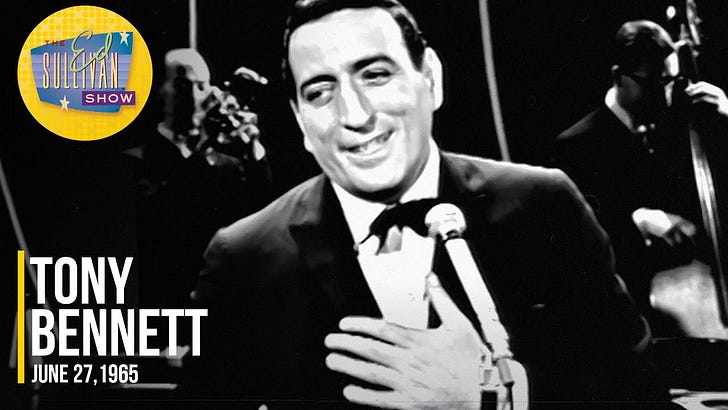


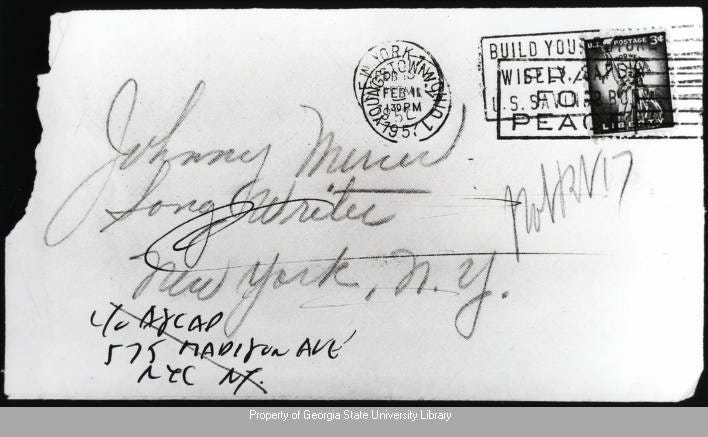
I love this so much. It's a fantastic song, and made all the more fantastic by the story behind it. Thanks for sharing it with us!
I loved this. Thank you for sharing this wonderful story! It speaks to possibility. That even the schemes we think might be “harebrained” could somehow find their ways into our version of Johnny Mercer’s hands. It is still possible for the generosity of other folks/kindness of strangers to work in our favor.